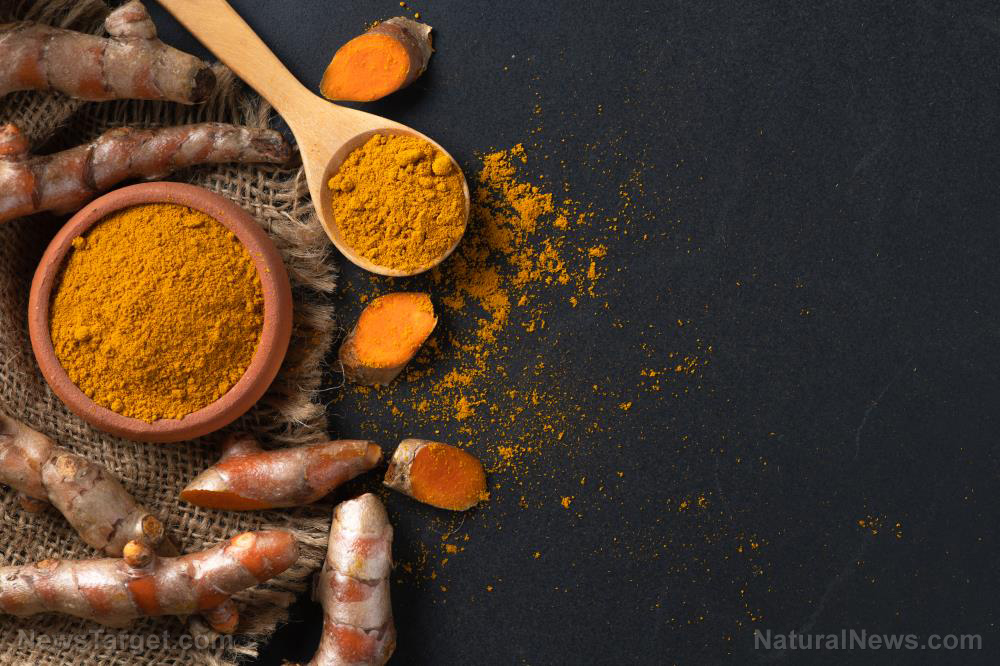Researchers eye ginseng as a natural medicine for preventing obesity
12/03/2021 / By Ramon Tomey

Chinese researchers have discovered that the root extract of an herb used in Traditional Chinese Medicine (TCM) may help fight obesity.
Ginseng root (Panax ginseng) is used in TCM to promote vigor and vitality. It is also prescribed to address anemia and impotence. A recent study published in the journal Gut highlighted another use for ginseng, which is to help people shed excess body weight.
Obesity and overweight have become serious public health problems in many countries. Current strategies to address these metabolic conditions focus on limiting the amount of calories the body gets from food. In their study, Chinese researchers proposed an alternative method of dealing with obesity — that is, by activating brown adipose tissue (BAT), or brown fat cells, using ginseng.
BAT is rich in iron-containing mitochondria that give brown fat cells their color. The main function of BAT is to burn calories from food and produce body heat through a process called thermogenesis. According to senior study author Wanzhu Jin, promoting BAT thermogenesis is a novel and effective therapeutic approach for treating obesity and other related metabolic disorders. Earlier studies have shown that brown fat helps control weight and fight obesity. (Related: Fight obesity with Traditional Chinese Medicine.)
Activating BAT and reducing adiposity with the help of ginseng
For years, researchers have focused on dietary fiber and its potential as a natural treatment for obesity. A type of fiber known as soluble fiber, in particular, has been found to have beneficial effects on energy metabolism. According to a study published in the International Journal of Obesity, soluble fiber is fermented by beneficial bacteria in the colon to produce short-chain fatty acids (SCFAs). These fermentation products not only promote energy homeostasis but also appetite regulation.
However, there are other dietary components besides common soluble fiber sources that can help with weight management. For instance, recent studies have shown that ginseng also has the ability to promote weight loss, but how it does so is unclear. Jin and his team hypothesized that ginseng may also induce the good bacteria in the gut to produce metabolites with anti-obesity effects like SCFAs.
To test their hypothesis and identify which strains produce beneficial metabolites in the presence of ginseng, the researchers gave diabetic mice ginseng extract and evaluated the herb’s effects on the animals’ gut microbiota using high throughput gene sequencing. To identify the metabolites produced by the microbes, they also performed metabolomic analyses of blood samples taken from the mice.
The researchers found that ginseng reduces adiposity by inducing a gut bacterium known as Enterococcus faecalis to produce an unsaturated long-chain fatty acid (LCFA) called myristoleic acid (MA). Both E. faecalis and MA activate BAT and promote the formation of beige fat, which, like BAT, produces heat by burning calories. White fat cells can transform into beige fat cells when exposed to low temperatures — usually 3 C above a person’s shivering temperature point.
The researchers also found that a gene in E. faecalis plays an important role in ginseng’s mode of action. The ACOT gene appears to be crucial for the production of MA, as evidenced by the significantly reduced production of the LCFA when the gene was deleted. E. faecalis without the ACOT gene could not increase MA levels enough to reproduce the beneficial effects the researchers observed initially, even after ginseng treatment.
Based on these findings, the researchers concluded that the synergistic effects of ginseng, the gut bacterium E. faecalis and the omega-5 fatty acid myristoleic acid on fat metabolism present a promising new strategy for preventing or treating obesity and other metabolic disorders.
Sources include:
Submit a correction >>
Tagged Under:
alternative medicine, Chinese medicine, fight obesity, ginseng, herbal medicine, Herbs, metabolic health, natural cures, natural medicine, prevention, remedies, research, weight loss, weight management
This article may contain statements that reflect the opinion of the author
RECENT NEWS & ARTICLES
COPYRIGHT © 2017 NATURAL MEDICINE NEWS





















